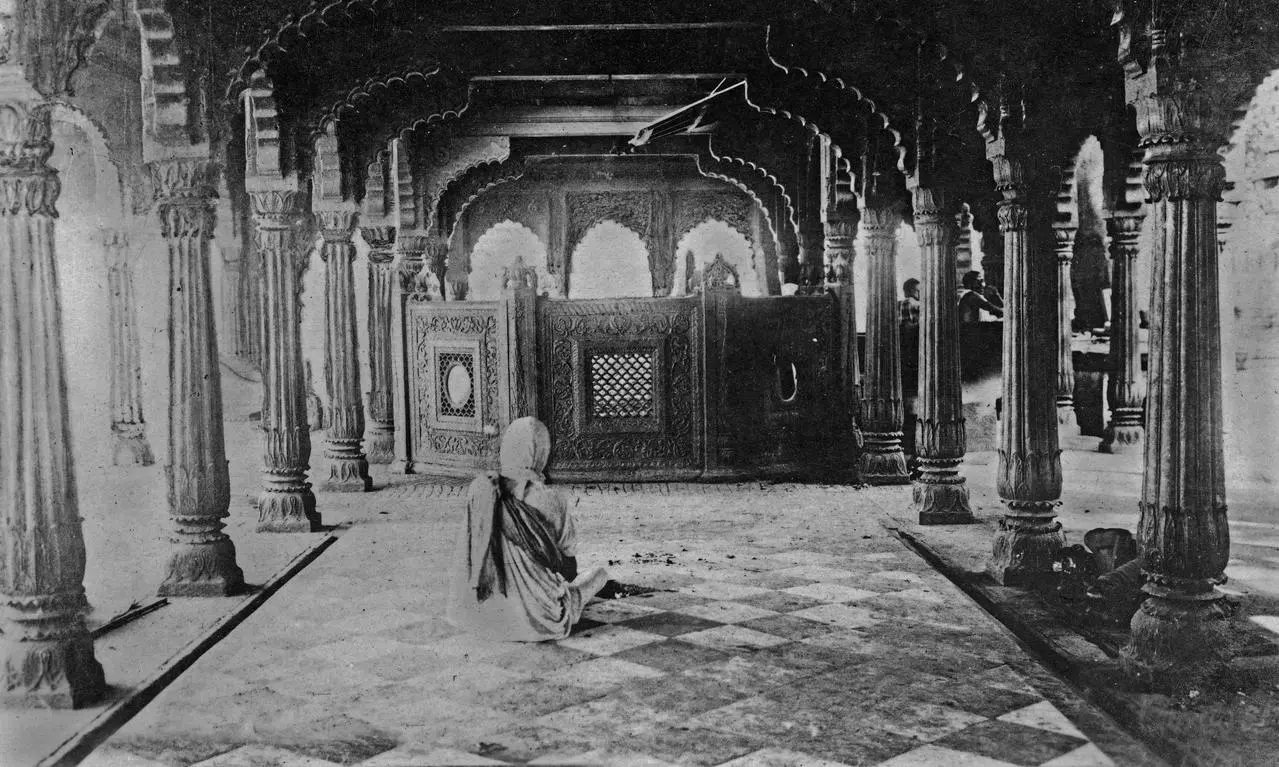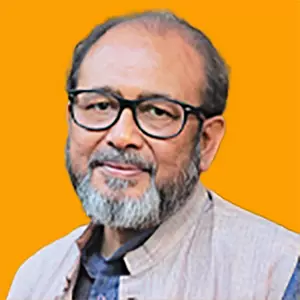
- Home
- India
- World
- Premium
- THE FEDERAL SPECIAL
- Analysis
- States
- Perspective
- Videos
- Sports
- Education
- Entertainment
- Elections
- Features
- Health
- Business
- Series
- In memoriam: Sheikh Mujibur Rahman
- Bishnoi's Men
- NEET TANGLE
- Economy Series
- Earth Day
- Kashmir’s Frozen Turbulence
- India@75
- The legend of Ramjanmabhoomi
- Liberalisation@30
- How to tame a dragon
- Celebrating biodiversity
- Farm Matters
- 50 days of solitude
- Bringing Migrants Home
- Budget 2020
- Jharkhand Votes
- The Federal Investigates
- The Federal Impact
- Vanishing Sand
- Gandhi @ 150
- Andhra Today
- Field report
- Operation Gulmarg
- Pandemic @1 Mn in India
- The Federal Year-End
- The Zero Year
- Science
- Brand studio
- Newsletter
- Elections 2024
- Events
- Home
- IndiaIndia
- World
- Analysis
- StatesStates
- PerspectivePerspective
- VideosVideos
- Sports
- Education
- Entertainment
- ElectionsElections
- Features
- Health
- BusinessBusiness
- Premium
- Loading...
Premium - Events

Securing control over Gyanvapi Masjid and razing it to build another temple is not the only objective and is instead part of a pre-determined political campaign
The permission granted by a Varanasi Court to Hindu parties after upholding the right of the priest’s kin to worship ‘deities’ at the Gyanvapi mosque cellar has elated significant sections of the majority Hindu community while giving another push towards despair to an equally large group among the minority Muslim community. It also makes those in both communities, who do not go with the primacy of religion as basis of social identity, further despondent.
This order and the emotions it has evoked are in complete contrast to the hope of reconciliation and ‘resolution’ expressed by Prime Minister Narendra Modi and the Sarsanghchalak of the Rashtriya Swayamsevak Sangh, Mohan Bhagwat, in their speeches after the consecration ceremony at the Ram temple in Ayodhya on January 22.
Ayodhya ruling
A similar hope of closure in the decades-long conflict over places of worship of Hindus and Muslims was raised in the aftermath of the Supreme Court’s judgment in the Ayodhya case on November 9, 2019.
In fact, because of this promise contained in the judgment, many across communities backed the verdict despite it being logic-defying in certain aspects.
Partisan judges
Wednesday’s development, however, puts the spotlight on the continued partisan role being played by different individuals within the judiciary. It has to be noted that the core ruling of Dr Ajaya Krishna Vishvesha, the District and Sessions Judge in Varanasi, on January 31 that the Hindu side has the right to offer prayers in the southern cellar under the Gyanvapi Mosque was passed on the last day he was in office. Significantly, Vishvesha was closely associated with the Kashi Vishwanath Temple-Gyanvapi Mosque dispute for more than two years after the Supreme Court transferred certain hearings pertaining to the issue from a junior division judge to his court.
The apex court decided this in the belief that social complexities involved in the matter required hearing by a ‘senior and mature’ judge, and that Vishvesha was an apt choice for essaying this role. Paradoxically his seniority and maturity would have to be scrutinized after his career reached an end on Wednesday as this deeply polarizing ruling came on his last day in office.
Last day verdict
But no imputation is being made while drawing readers’ attention to the fact that barely hours after passing his verdict on the petition of one of the Hindu parties, the District Judge walked out of the court premises for the last time in his official capacity after a 34-year stint in the state judicial service.
His judgment follows the sequence of then Chief Justice Ranjan Gogoi retiring shortly after he presided over the Ayodhya Bench and being subsequently nominated to the Rajya Sabha by the Union government.
Demolition case
Likewise, Justice SK Yadav, the CBI judge who heard the Babri Masjid demolition criminal case against numerous BJP and RSS fraternity leaders, including LK Advani, Murli Manohar Joshi and Uma Bharati, had already retired and was on extension. Subsequent to the verdict acquitting all accused, he was appointed a Deputy Lokayukta.
Intriguingly, less than fortnight ago, on January 17, Vishvesha appointed the District Magistrate of Varanasi as ‘Receiver’ for this particular cellar.
Wednesday’s ruling has come at a ‘lightning’ speed when compared to the tardy progress in civil matters in lower courts in the country.
Varanasi rituals
The Hindu case rested on the argument that priest Somnath Vyas performed rituals in the cellar till November 1993, at which point the state government of that time barred his and other Hindus access.
Importantly, by then the Places of Worship Act, 1991 had been enacted and it specified that the religious character of every place of worship, barring the disputed site in Ayodhya, would be maintained in the condition it had been on August 15, 1947.
Prayers to what the Hindus believed were deities were stopped after the coalition government between Samajwadi Party and Bahujan Samaj Party, headed by Mulayam Singh Yadav, assumed office after defeating the BJP in the first Assembly elections after the Babri Masjid’s demolition.
Communal riots
It needs to be recalled that communal riots were triggered across large parts of India, especially parts of Uttar Pradesh and (then) Bombay, in the wake of the demolition. Access to Hindus to the cellar beneath the Gyanvapi Masjid was stopped to prevent further communal clashes.
Thereafter, the denial of access remained unchallenged for decades till, on September 25 last year, Shailendra Kumar Pathak, maternal grandson of Somnath Vyas, sought the right to worship the deities there.
He filed the plea in the court of the civil judge senior division, but subsequent to making his submission, Pathak’s counsel moved another application before the court of district judge seeking its transfer to his court, mentioning that it would be deemed appropriate in the interest of justice.
Scientific survey?
Vishvesha transferred the case to his court in slightly more than three weeks. Significantly, Vishvesha had also on July 21 last year directed the ASI to conduct a “detailed scientific survey” -- including excavations, wherever necessary -- to determine if the mosque located next to the Kashi Vishwanath temple was built on the remains of a temple. He has also heard and adjudicated other debatable matters in the Gyanvapi case.
The so-called findings of the ASI, which have not, importantly, undergone peer review so far, were recently handed to both parties and are now in the public domain, making the ASI’s claim appear as “verified” truth.
Significantly, the Supreme Court did not endorse the ASI findings in Ayodhya in their 2019 judgment.
Flawed view
It is thereby self-evident that the ruling on January 31 has to be seen as a hurriedly dictated order aimed at easing the process of Hindus securing access to the Gyanvapi Masjid for unfettered access to it, initially the southern cellar and later, probably the rest of the Islamic place of worship.
It cannot be overlooked that Vishvesha not only permitted access for Pathak, but also directed that the barricades in front of the Nandi statue in front of the “wazukhana” – where ablutions were performed before namaz was offered – within the mosque complex will be removed to make way for the petitioner to perform puja.
The District Judge’s ruling was added to the long list of ‘despondent’ days in the four-decade-long history of the agitation. It must be borne in mind at all times that this movement was waged by the Sangh Parivar and its primary purpose was to, in the words of LK Advani, popularise the idea of cultural nationalism, the core agenda of the ideological fraternity.
Advani’s prediction
Back then, after his release following the Babri Masjid’s demolition, he declared at a press conference in New Delhi that the Ram Janmabhoomi movement was not merely about constructing a temple but also canvassing support for the Hindutva idea.
Likewise, securing control over the Gyanvapi Masjid and demolishing it to thereafter construct another resplendent temple is not the only objective and is instead part of a pre-determined political campaign whose ‘trailer’ we are seeing being rolled on screens, big and small, cineplexes and handsets.
Clearly, religion and religious belief are passé, and the focus in New India is on the spectacle of the presence of religion.
(The writer is an author and journalist based in Delhi-NCR. His latest book is “The Demolition, The Verdict and The Temple: The Definitive Book on the Ram Mandir Project”. He is also the author of “Narendra Modi: The Man, The Times”. He tweets at @NilanjanUdwin)(The Federal seeks to present views and opinions from all sides of the spectrum. The information, ideas or opinions in the articles are of the author and do not necessarily reflect the views of The Federal.)


